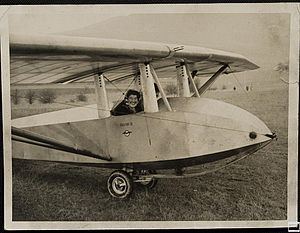Wingspan 18 m First flight 1935 | Length 6.74 m Manufacturer Slingsby Aviation | |
 | ||
The Slingsby T.4 Falcon 3 was a two-seat training glider produced from 1935, by Fred Slingsby in Kirbymoorside, Yorkshire.
Contents
Design and development
Espin Hardwick persuaded Fred Slingsby to build a two-seat version of the Falcon. Slingsby enlarged the fuselage to accept side by side seating for pupil and instructor, and enlarged the aircraft to cope with the increased weight. The increased span wings were attached to a rectangular centre-section which was supported by six struts. To increase the field of vision the centre section had celluloid panels and the wing root fairing strips were made from a clear plastic, both of these vision aids tended to have short lives, and were usually replaced with doped fabric or plywood as appropriate.
History
After successful flight tests with only minor modifications, the Falcon 3 was put into production. Eight more were built, but didn't see as much use as trainers as they should have, due to the short-sighted prevailing opinion that trainee pilots gained more from having to master gliders with poor flying characteristics. Production halted by 1938 and most of the Falcon 3's were impressed for use by the Air Training Corps
Operators
UK
Specifications
General characteristics
Performance
